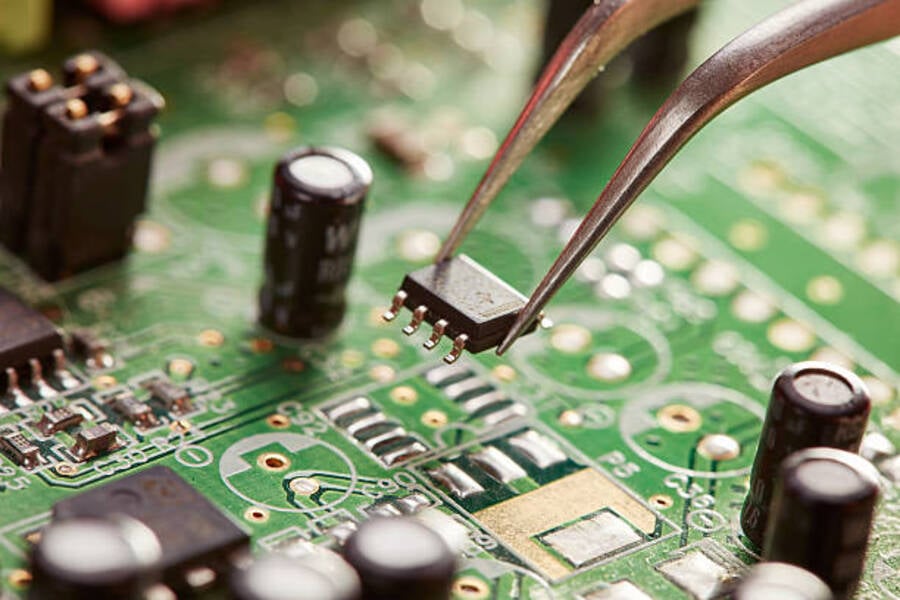
The Basics of Choke and Inductor
When it comes to electronics, the choke and inductor are two fundamental components. While both might look the same and have similar properties, they are very different in how they perform their intended function. This article addresses the differences between the two components and how they differ in terms of function, properties, and applications.
What is a Choke?
A choke is an electrical device that is used to restrict the amount of current that flows through a circuit. It is also known as an inductor used for blocking higher-frequency alternating currents (AC) in an electrical circuit while allowing direct currents (DC) to flow. Entrapped in the core of the choke, the flux reduces (choke) current from the circuit and provides space for the oscillating frequencies.
What is an Inductor?
On the other hand, an inductor is a passive electronic device that can store energy in a magnetic field created by the current flowing through the component. It usually comprises a conducting loop that creates the magnetic field on the coiled core, generally made of a ferromagnetic material. The stored energy in the magnetic field can cause the production of a back EMF (Electromagnetic Force) when the circuit's current abruptly stopped.
Components and Parameters
Chokes usually comprise a single winding of self-sufficient wire insulated with silk or other dielectrics materials. It is possible to have air-cored chokes, where they don't have any ferromagnetic core material to increase the inductance. On the other hand, Inductors can have multiple winding loops, multiple sets, and different kinds of core materials. Inductance, represented by the letter L, and the amount of current a component can handle are the two primary parameters for both devices.
Applications as Filters and Conductors
Chokes are traditionally consumed in power supplies, where they are used as highly effective filters. The filtering is efficient in diminishing the ripple frequency in output power supplied to AC loads. Inductors equally play a significant role in power supply circuits but as conductors. The energy stored in the inductor's magnetic field is gradually discharged into the circuit, helping to maintain a constant current.
Significance in Electronic Devices
Inductors have diverse applications, from simple filters to oscillators, RF circuits, and audio components. The ability of an inductor to store electrical energy is highly significant in power management and timing circuits. Chokes, on the other hand, are vital in renewable energy systems, motor control circuits, and many passive power electrical devices.
Core Material and Saturation Properties
The type of core materials used in choke and inductor varies widely. Chokes generally have a solid metal core, whereas inductors use ferromagnetic materials such as Iron, Ferrite, or laminated silicon. When the current flowing through the inductor continues to increase, the ferromagnetic core starts to saturate. That is because such material's magnetic characteristics change dramatically at high saturation levels.
Polarity and Focus
When it comes to protecting electronic devices, polarity is critical. Inductors have a polarity marking for this purpose, which must be in-phase with the applied voltage. Chokes, on the other hand, do not have such marking since their primary function is to block high-frequency alternating currents. Chokes, therefore, have no polarity marking concerns.
The Inductor and Choke's Role in Electrical Circuit Designs
Inductors and chokes are crucial components in many electrical circuit designs. They help to resist current during shifts, reduce electrical harmonics, and facilitate the smooth functioning of electrical systems. Chokes regulate higher frequencies, such as electromagnetic radiation, RF disturbances and EMI flows, while inductors store energy throughout the time-controlled gating.
The Efficacy of Choke Versus Inductor
In general, choke and inductor are quite different, with diverse electrical features that make them unique in their way. The primary goal is to control the current flowing through circuits and reduce noise. While chokes perform their primary function by filtering out unwanted frequencies, inductors store and release energy to ensure that the current flows as needed.
Conclusion
The difference between the choke and inductor goes beyond physical looks or basic electrical components. Each plays a critical role in controlling current flow, reducing noise and unwanted frequencies, and storing energy. Designers and engineers must select the right component to use based on the intended application.

